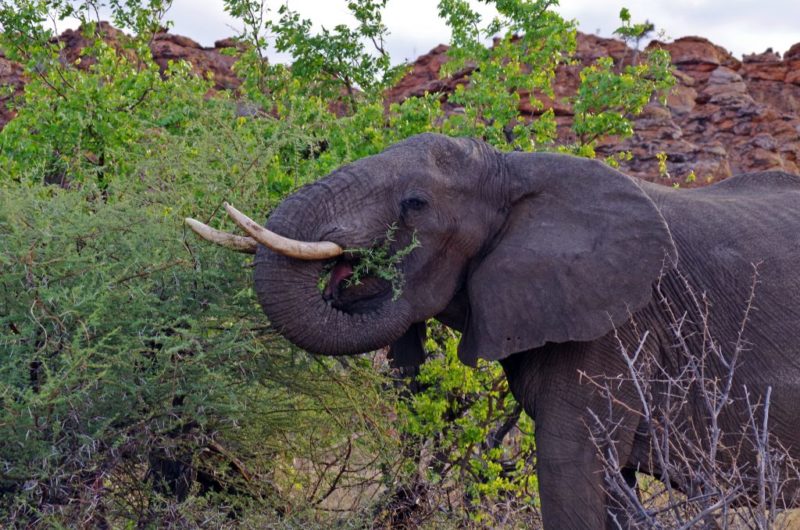Facts about the African Elephant – (Loxodonta africana)
African Elephants are the Gentle giants of the African bush
They are highly social animals. Their complex society focuses on maintaining group cohesion and a strict discipline regime ensures social order at all times. Due their enormous size, elephants could cause serious damage to themselves and each other if their social behavior
was not regulated and ritualised. Herd life predominantly revoles around guarding, rearing and teaching calves, activities engaged in by all herd members.

Male and female Elephants have very different social lives. Females spend their whole lives in a herd of related females (sisters, aunts, daughters, cousins); while males live solitary lives.They are the world’s largest land animals. Each Elephant herd is strictly hierarchical, headed by an elder female called the matriarch. Both have tusks, and are either left or right tusked, using one tusk predominantly. Elephant calves – born after 22 months gestation – learn behaviour from observation rather than instinct and are cared for by several members of the herd.
The ears of an Elephant
The ears of an African elephant have multiple uses. They are used for hearing with the largearea acting like a satellite dish to channel sounds into the eardrum, the opening of which is it front of the flap. They are used to express mood during social interacts. The Ears also play a vital role in thermoregulation (heat control), effectively dissipating three-quarters of the heat needed to maintain a constant body temperature.The weight of an elephant´s enormous head is reduced by honeycomb-like formations in the skull.


Details
Size :
Bull: 3m (at shoulder) Cow: 2,5m (at shoulder)
Weight :
Bull: up to 6 tons ; Cow: up to 4 tons
Lifespan :
55-60 years
Habitat & Distribution :
Every habitat in Africa with adequate food, shade and water
including swamp, rainforest, woodland, savanna, desert,
grasslands, hills, mountains and semi-desert
Gestation : 22 months
# of young 1
Food :
Herbivores- catholic diet that uses 90% of local plant species
including grass, herbs, sedges, aquatic plants, bulbs, tubers,
roots, fruits, flowers, bark, wood, pods, seeds, leaves
and entire branches
Predators :
Lions and hyenas prey on young; lions in some kill adults.
Death also parasites, diseas and starvation



